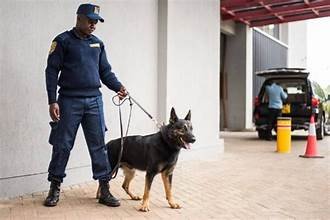Introduction
When it comes to security services, humans aren’t the only ones who can lend a helping hand, or in this case, a helping paw. Canine security services have emerged as a powerful and effective means of ensuring safety and protection in various settings. With their keen senses, unwavering loyalty, and natural instincts, dogs have proven to be invaluable assets in the field of security. In this article, we will explore what canine security services are, how they are provided, and the unique advantages they bring to the table.
Understanding Canine Security Services
Canine security services involve the utilization of specially trained dogs to enhance security measures in a variety of environments. These highly trained dogs, often referred to as security or guard dogs, work alongside human security personnel to detect threats, deter potential intruders, and provide an added layer of protection. Canine security services are commonly employed in areas such as airports, warehouses, residential properties, events, and even prisons.
How Canine Security Services are Provided
1. Selection and Training
The process of providing canine security services begins with the careful selection and training of suitable dogs. Certain breeds are preferred for their natural instincts, intelligence, and physical attributes. German Shepherds, Belgian Malinois, and Doberman Pinschers are among the most commonly used breeds due to their trainability and protective nature.
Once selected, the dogs undergo rigorous training programs conducted by experienced handlers and trainers. The training focuses on obedience, scent detection, apprehension techniques, and socialization. The dogs are taught to respond to specific commands and to identify and alert their handlers to potential threats or suspicious activities.
2. Handler and Dog Partnership
Canine security services rely on the strong bond and partnership between the dog and its handler. Handlers are responsible for the care, training, and deployment of the dogs. They develop a deep understanding of their canine partner’s behavior, body language, and capabilities. This partnership is built through consistent training, positive reinforcement, and regular exercises to maintain the dog’s skills and obedience.
3. Patrol and Detection
Once trained, the canine security teams are deployed to patrol and secure the designated areas. The dogs and their handlers conduct regular patrols, ensuring a visible presence and deterring potential intruders. The dogs’ heightened senses, particularly their sense of smell, enable them to detect hidden or concealed items, such as drugs, explosives, or weapons. Their ability to detect scents that are undetectable to humans makes them invaluable assets in security operations.
4. Crowd Control and Protection
Canine security services also play a crucial role in crowd control and protection. These dogs are trained to maintain order and prevent unauthorized access in crowded areas. Their presence alone can act as a deterrent, discouraging unruly behavior or potential threats. In situations where physical intervention is necessary, the dogs are trained to apprehend and hold suspects until human security personnel can take over.
5. Continuous Training and Care
Canine security services require ongoing training and care to ensure the dogs remain effective and healthy. Handlers and trainers conduct regular training sessions to reinforce skills, introduce new techniques, and maintain obedience. The dogs receive proper nutrition, veterinary care, and exercise to keep them in optimal physical and mental condition. This commitment to their well-being ensures that they can perform their duties effectively and safely.
FAQ
1. Are all dog breeds suitable for canine security services?
No, not all dog breeds are suitable for canine security services. Certain breeds, such as German Shepherds, Belgian Malinois, and Doberman Pinschers, are preferred due to their trainability, protective instincts, and physical attributes.
2. How long does it take to train a dog for canine security services?
The training period for canine security services can vary depending on the dog’s breed, age, and individual capabilities. On average, it can take several months to a year to complete the training program and ensure that the dog is proficient in all required skills.
3. Are canine security services safe for the public?
Yes, canine security services are designed to prioritize the safety of the public. The dogs undergo extensive training to ensure they can distinguish between potential threats and non-threatening individuals. Handlers are responsible for controlling the dogs and ensuring they do not pose a risk to innocent bystanders.
4. Can dogs be used in indoor settings for security purposes?
Yes, dogs can be used in indoor settings for security purposes. They are trained to navigate and search confined spaces, making them effective in detecting hidden objects or individuals.
5. What is the lifespan of a dog in canine security services?
The lifespan of a dog in canine security services can vary depending on factors such as breed, health, and individual circumstances. On average, working dogs can serve in security roles for around 8 to 10 years before retiring and enjoying a well-deserved rest.
Conclusion
Canine security services have proven to be a valuable asset in the field of security. These specially trained dogs, working alongside human security personnel, enhance detection abilities, provide deterrence, and offer rapid response capabilities. With their heightened senses, unwavering loyalty, and adaptability, dogs play a crucial role in ensuring safety and protection in various environments. Whether it’s patrolling, detecting threats, or providing crowd control, canine security services unleash the power of four-legged protectors, making them an indispensable component of comprehensive security solutions.




